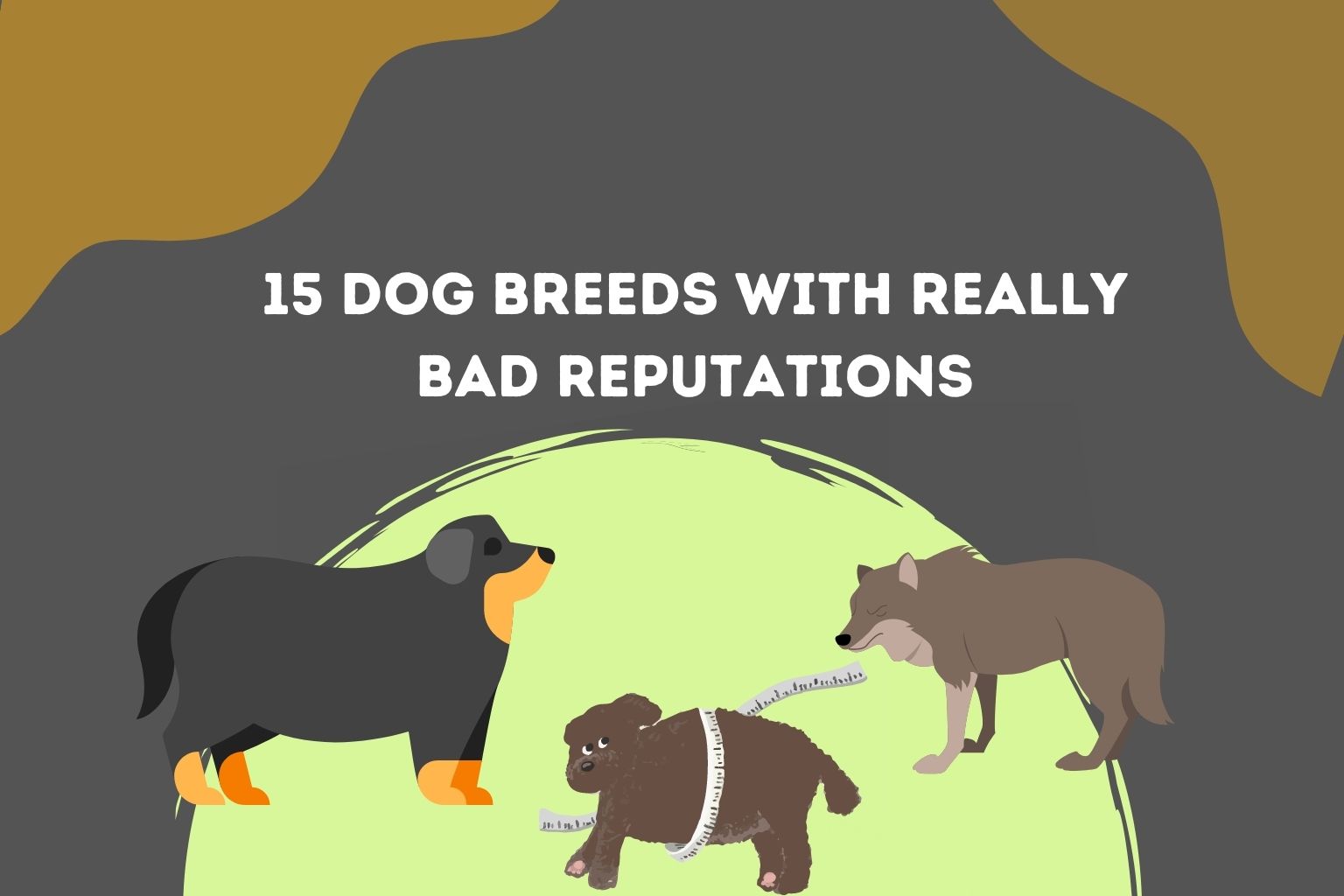When you’re asked to name a dog breed that has a bad rap, what comes to your mind? The Rottweiler? Pit Bull types? Dobermans? And how do you feel about that bad rap – do you think it’s deserved?
If you’ve read my post, Breed Stereotyping – Why It’s Harmful, and Why We Need to Fight It, then you know that I am firmly of the belief that there is no such thing as an inherently “bad” breed of dog. Sadly, though, some dog breeds have really bad reputations, and are even believed to be prone to turn on their owners. Owning one of these breeds can earn you a world of grief. People will tell you that your dog can’t be trusted. They’ll discourage children from approaching your perfectly friendly dog with comments like “You can’t pet that; it’s a Rottweiler!” and then a child ends up deprived of a positive interaction with your best buddy, and believing that your dog is somehow “bad” simply because of his breed. It’s heartbreaking.
He’ll Turn on You!
I don’t really think that any breed of dog is prone to “turn,” but some people will insist that they will. They’re wrong, but even so, their wrong-headed opinions can give perfectly good breeds of dogs a very bad name. A good dog does not “turn.” A dog that has been abused and tortured in order to make it mean might. A bad owner will make a bad dog – a good owner will not.
Just as an example, a friend of mine has just been told that she has 30 days to get rid of her dog, or find another place to live. Why? Well, because her landlord has decided that her sweet, gentle Doberman might be a danger to the neighborhood kids. This is despite the fact that this dog is best friend to, and protector of, a six-month-old child, and has never shown even the slightest bit of aggression toward anyone at all.
He’s Dangerous!
Another friend who owns a Boston Bull Terrier was recently denied home owner’s insurance, again because of a perception of the breed as being dangerous. For that matter, my friend, Neila, who owns and breeds Rottweilers, has been living without insurance on her home for years, for the same reason. If anything goes wrong at her house, she’s going to be without insurance, simply because of her choice of canine companions.
Imagine, not being able to get homeowner’s insurance because a bunch of idiots, sitting around a board room, who have probably never even had contact with any of these supposedly dangerous dogs, are looking at statistics that are often skewed, and deciding that they can’t risk having to pay out on what is likely to be a ridiculously low amount of claims. Imagine being discriminated against in that way.
I’m Sad!
It breaks my heart when I think of people having to give up their dogs, or being discriminated against because of their breed of choice, just because someone has decided to name a particular dog breed that has a bad rap. It happens over and over, though, and some breeds are indisputably targeted. The following are 15 dog breeds that have really bad reputations that, in my opinion, are pretty much undeserved. I’m presenting them in the order that, as far as I’ve been able to determine, represent the most to the least dangerous of the supposedly dangerous breeds.
Related Content:
11 Safest Dog Breeds
15 Most Posh Dog Breeds
Best Dog Breeds to Win Over Your Spouse
Bad Doggies?
Sometimes, I wonder about the people who make up these lists. Where do they get their facts? Do they go with simple bite counts, or do they actually do any research? I’d have to go really deep and do a lot of very time-consuming research if I wanted to determine which breeds are really the most dangerous, and honestly, I just don’t have enough time to do that. So I’m compiling this list based on other lists that I’ve been able to find.
I expect that many of you will be outraged to find your dog on the list. I’d just ask you not to go after me, because I’m just as outraged as you are. As I’ve already stated, I don’t believe that any breed of dog is naturally dangerous. I am simply offering you the information that I’ve found online, and not representing that it has any sort of veracity. If your dog is on this list, I’m sorry – I haven’t put him there; I’m just reporting what other people have suggested.
Here we go.
1. American Staffordshire Terrier
The AmStaff makes the number one spot on when you’re looking to name a dog breed that has a bad rap, because the breed makes headlines all the time. I think that this is often due to the fact that really bad people acquire these dogs and use them for illegal purposes, like dog fighting and guarding drugs.
Oddly enough, when I was cleaning out my grandparents’ house after Gramps died, I came across a box of old hunting magazines from the 1970s. Out of curiosity, I flipped through a few of them, and found, in the back pages, several ads for AmStaff puppies, representing these dogs as wonderful family pets – nanny dogs!
Yes, that’s the actual phrase that was used – nanny dogs. Because of their gentle nature and affinity for children. We have fallen so terribly when these wonderful dogs are now known as aggressors, because they’re popular among criminals.
Dog fighting is, of course, illegal, and yet it’s still common – same with drug dealing. The illegality of these two activities, though, doesn’t seem to stop people from wanting to get large dogs, and then torment them to the point that they become vicious. So, American Staffordshires get a reputation for attacking kids, elderly people, and even their owners with very little provocation.
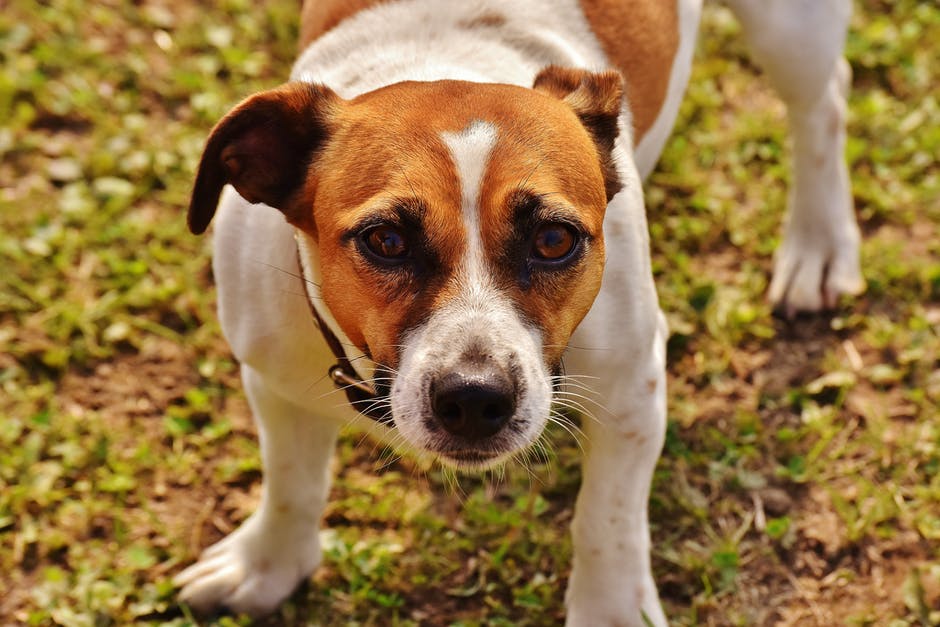
Properly trained and socialized, an American Staffordshire Terrier isn’t a threat to anyone. But because of “bad actors,” an insurance company will probably deny you coverage if you have a dog of this breed. At the very least, they’ll make you pay a higher premium.
If you’re considering an Amstaff, I have to tell you that it’s not a breed for everyone. You will have to be an assertive owner. Staffies can be stubborn, and they need a firm (but kind) hand. Properly socialized and trained, though, they make wonderful pets.
2. German Shepherd
The German Shepherd comes in at number two on the list of 15 dog breeds that are believed to be aggressive, and in fact, the German Shepherd ranks in the top five dog breeds that are most likely to bite.
You may remember that just about every large breed of dog has had its moment in the “dangerous animal” spotlight. In the 1970s, if you were asked to name a dog breed that has a bad rap, chances are it would have been the Shepherd, and obviously, that’s still true to this day.
I think, though, that this likely has less to do with ill nature in the dog than it does with the fact that there are so many German Shepherds. The breed is very popular, and any time that there are large numbers of a certain breed, more bites will be attributed to it.
It also can’t be overlooked that when bite counts are recorded against a breed, we take the word of the person who has been bitten, and most people simply can’t accurately identify dog breeds with any real accuracy. If it has pointed ears and a plumed tail, it could be a German Shepherd, or a Husky, or an Australian Shepherd, or a Shiba Inu, or … well, you get the idea. But because the German Shepherd is a very common breed, the victim is going to be naturally disposed to say “I think it was a German Shepherd.” The bite count is recorded as attributable to a German Shepherd – not to a dog who might have been one.

Are German Shepherds aggressive?
Well, yes, they can be. They’re very confident, protective dogs, and because of their size and strength, it’s very important that they be properly socialized. German Shepherds can also be easily excited, and it’s easy enough to make the leap from excitement to aggression. So they definitely make the list when you want to name a dog breed that has a bad rap. However, there is no such thing as a breed of dog that does not have at least some level of prey drive hard-wired into its brain, and with the Shepherd, it’s a little more hard-wired than with some other breeds. So again, socialization is vital.
3. Rottweiler
The Rottweiler is a very old breed, dating back to the Roman Empire, where it worked as a herding dog and later as protection for tax collectors.
I could go on and on about how maligned this particular breed is. They’re pretty much at the top of the list when you’re asked to name a dog breed that has a bad rap. And although I sort of suggested that I wouldn’t bring my opinion into this post, I’ve changed my mind. Hey, this is my blog and I can do what I want!
I have never met a mean Rottweiler. I have heard reports of Rottweilers that aren’t to be trusted, but I have never personally met one. Without exception, the Rotts I have met have been big, sweet clowns. Not the brightest bulbs on the string sometimes, but not vicious by any means.
My friend, Neila, has placed Rottweilers in homes with small children and never had one single report of a problem. Of course, she also vets potential homes very carefully. She knows that Rottweilers are very strong dogs, and that they can have every bit as much strength of will as they do strength of body, so she only places puppies in homes where the owners have experience with large breeds.
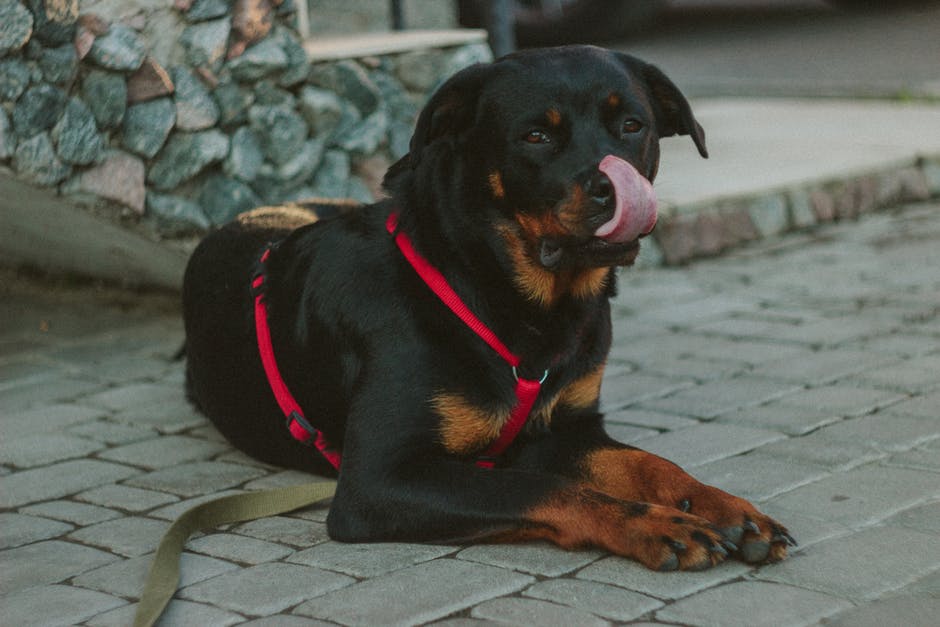
If your heart leads you toward a Rottweiler, then I applaud that. You will have a loyal companion possessed of body strength that will ensure your safety if you are confronted by anyone who intends to do you harm. I would suggest, though, that you need to never lose sight of the fact that these are very strong dogs, and that you should be constantly vigilant – your Rott may not be able to understand the difference, say, between a hug from a friend or family member, and an attack by someone who intends you harm. A bite from a Toy Poodle or a Yorkie isn’t a big deal, but a bite from a Rottweiler can be traumatic to the point where surgery is needed. Put in plainer terms, if a Cocker Spaniel bites someone’s hand, that person will probably need stitches. If a Rottweiler bites, the hand may need to be sewn back on.
Also, never, ever buy a Rottweiler from a puppy mill. That’s just a disaster waiting to happen. For more information on the horror of puppy mills, see my post, 5 Reasons Why Puppy Mills Must be Stopped.
4. Doberman
Most Dobermans look pretty scary, particularly if they’ve had their ears cropped (a practice that I dislike, and that is now illegal in most states). It’s a shame, though, that the breed shows up over and over on lists of 15 dog breeds that could be dangerous, because most Dobies are complete marshmallows. They love their humans, and they’re generally cordial with visitors.
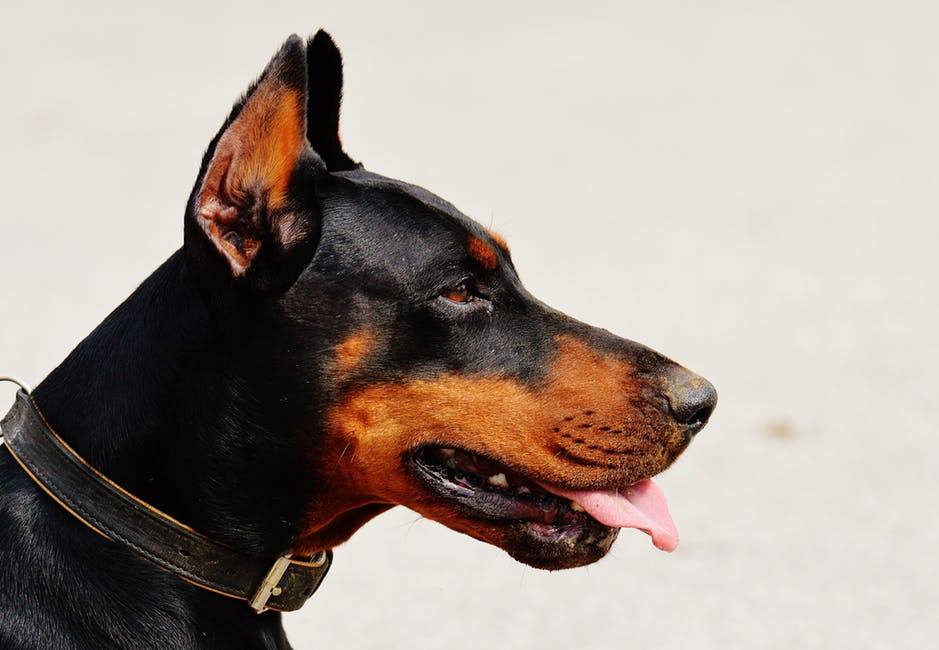
But when it comes to a dog breed that has a bad rap, the Dobie is pretty high on the top of the list, and this is simply because a badly trained, badly socialized Dobermancan be a very dangerous animal. They’ve been known to bite humans, and attack other dogs. This is simply because a Doberman, believe it or not, is a terrier breed, and terrier breeds are known to be a bit high-strung. If you’re considering a Dobie, you’ll need to make sure to work on socialization. You have a medium- to large-size dog (usually between 70 and 90 pounds, although some can go even higher) that can be a huge threat if he’s not properly trained.
5. Wolf Dog
Don’t.
Just don’t.
Please don’t think of adopting a wolf dog, ever. See my post, Wolves and Wolf Hybrids as Pets for more information.
I know that I’ve said that there’s no such thing as a bad dog. And I’m not saying that wolves and wolf hybrids are “bad,” just that they’re very, very dangerous. And they’re not DOGS.
Wolves and wolf hybrids are responsible for more attacks than any breed of domesticated dog, and quite simply, they can’t be trusted, even in the hands of the most assertive owner. What you need to remember is that a wolf or a wolf hybrid is not a dog, and cannot be expected to behave like a dog. They are not dogs. They are not domesticated on any level.
A dog – a true dog – even an adult dog, will almost always want to defer to his human. A wolf will not want to – on the contrary, a wolf is hard-wired to want to be the dominant member of his pack. What that means is that you will never be able to be sure that your wolf or hybrid is going to accept you as the alpha in your relationship – the wolf wants to be “top man.” Or woman. The minute you let your guard down, this type of animal is going to try to take control, and if you’re not incredibly strong, both physically and mentally, you’re going to lose the battle. I can’t say this often enough and loud enough – in a battle with a wolf dog, you WILL lose.
Wolves and dog/wolf hybrids are so dangerous that they’re among the most likely breeds to have to be euthanized. They will almost always become dangerous, and then something has to be done – usually, it’s euthanasia.
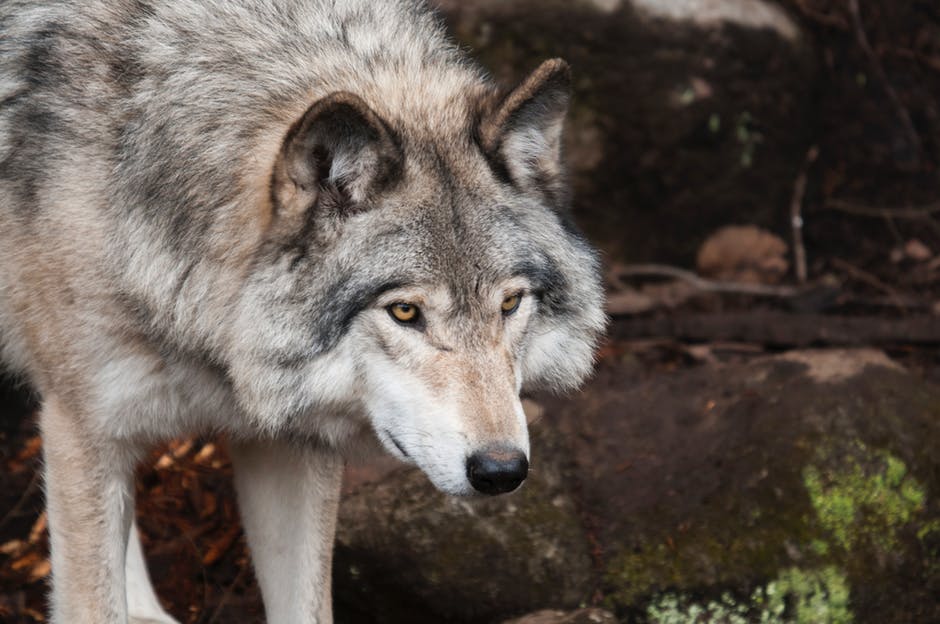
So what happens when you have a wolf or hybrid that you can’t control? Sadly, a lot of people decide to release the animal into the wild – after all, he’ll find a pack, and he’ll be fine, right?
The reality is that he may very well find a pack. That pack will never accept him and that pack will turn on him and kill him. The wolf pack that he finds is going to understand immediately that he is not “one of us.” He’s not an asset to the pack. He doesn’t know how to hunt, because he’s used to having humans feed him. He has no idea what to do when presented with a threat to the pack, because he’s never been threatened. He is useless, and he is going to be killed.
Do you want that for your pet? The animal that you, misguidedly, decided to adopt? Do you want his fellow canines to kill him? This is what’s likely to happen if you adopt a wolf or a wolf hybrid and then release it into the wild. So please, please, don’t adopt a wolf or a wolf hybrid! You are dooming him to being euthanized if he acts out in your neighborhood, and if you release him into the wild you are dooming him to a horrible death, ripped limb from limb by fellow canines.
If you still want to take your chances, then all I have to say to you is, you’re an idiot and I want you OFF MY PAGE NOW.
I’m not kidding. GO. You’re a moron, and I don’t want you here.
6. Bull Mastiff
The Bull Mastiff isn’t what I’d call a potentially vicious dog, by any means. In fact, Bull Mastiffs are typically known to be very gentle. However, it makes the list of 15 dog breeds with bad reputations purely because of its size, which is beyond huge! Properly trained, a Bull Mastiff can be a wonderful, loving companion, but if not properly trained, he could be an accident just waiting to happen – knocking over children and elderly people. Bull Mastiffs aren’t typically aggressive, but if you do end up with one that has a very dominant nature, he could be a danger to you and your family.
The main issue here, though, is size. A Bull Mastiff is a huge dog, and his cousin, the English Mastiff, even bigger. We’re talking here about a Bull that can reach 200 pounds, and an English that can go 240 or more. That’s a lot of dog!
Think about this for a moment – these are dogs that outweigh most people, and by quite a bit.
Are they vicious?
No, not really. English Mastiffs and Bull Mastiffs are just big, and a lot of the time pretty goofy, and they love to demand hugs and cuddles from their humans. It’s just that sometimes, those hugs and cuddles involve having a dog that weighs more than 200 pounds in your lap. Ouch! LOL!
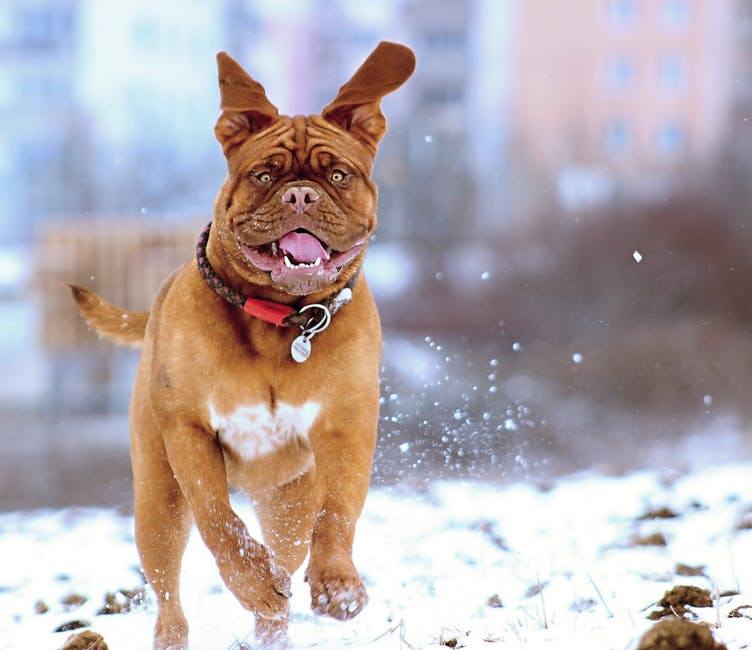
Both the Bull Mastiff and the English Mastiff were bred to assist gamekeepers by identifying and “holding” poachers. In other words, the mastiff would not bite a poacher. Instead, he would use his great size and strength to corner a poacher, and keep him in position until the gamekeeper could get there and arrest him. So you’re probably not in any real danger if a mastiff corrals you, but when you’re facing down a 200+ pound dog that has about 147 teeth and is drooling like he wants to eat you, you’re probably going to settle down and just wait to be arrested.
Mastiffs are not vicious, and probably won’t bite you. But they’re pretty scary.
7. Cane Corso
This breed is known for its hunting and guarding ability. Cane Corsos are very muscular, usually bond to one person, and if not socialized, might attack a stranger. If that happens, you can bet that there will be no good outcome. This is a very big dog with a huge set of teeth.
If you’ve ever seen a picture of a Cane Corso puppy, though, you’d find it hard to believe that this type of dog could be any threat – and in fact, they’re not, in the hands of the right owner. The Cane Corso is a strong-willed dog, though, so if you’re going to own one, you have to be sure that you’re comfortable in the alpha role.
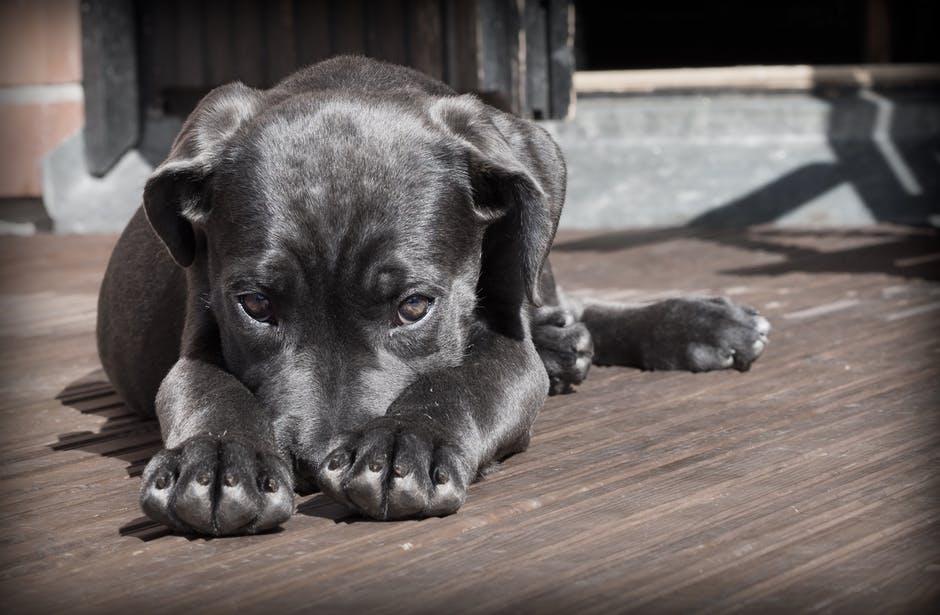
Most experts believe that the Cane Corso is not a good choice for people who aren’t familiar with large, aggressive dogs. They are also not suitable for people who aren’t willing to devote a lot of time to training and socialization.
By the way, a lot of the time, people mispronounce the name of this dog. It’s not “Cane” as in “Candy Cane.” It’s actually “Kah-nay.” Even owners and breeders get the pronunciation wrong.
8. Tosa Inu
The TosaInu is a comparatively rare breed, and was originally developed for fighting. This is a big dog, weighing up to 135 pounds, and can be very aggressive.
In some jurisdictions, the TosaInu is banned. The breed is not welcome in Australia; residents of the United Kingdom are required to obtain special permits before they can own a TosaInu, and they are completely illegal in Dublin and Hong Kong.
The trouble with the TosaInu is the same as it is with other dogs that have been traditionally bred for fighting: people acquire a TosaInu and assume that the dog is going to be much the same as any other household pet. Then, the worst happens, and a badly socialized Tosa bites someone, and the owner says, “I don’t know what went wrong; he never did anything like that before!”

You have to look at what the Tosa was bred for, and you have to understand that aggression is hard-wired into this dog breed. The other thing is that with a breed of this size, and with such powerful jaw pressure, socialization is vital. Bringing a dog of this breed into your home and not socializing him is actually very much like leaving a gun with all chambers loaded and the safety off laying around, and assuming that nothing will go wrong. It’s just a bad idea on all levels.
9. American Bandogge
Here is another comparatively rare breed that looks extremely scary. That’s not necessarily a bad thing. After all, if you’re considering a dog for protection, you don’t exactly want burglars to say to themselves, “Oh, look at the pretty dog; I think I’d like to pet him!”
The American Bandogge is a descendant of the American Pit Bull and the Neapolitan Mastiff, and is very muscular. The breed is known to be aggressive, especially if not properly socialized.
One thing you need to know about the American Bandogge is that if you’re the sort of person who wants to rescue an abused dog, this might not be the best choice. With this breed, abuse aggravates the tendency toward aggression, and a rescued American Bandogge can be very dangerous. A rescued American Bandogge is not going to think, “This guy seems nice, and he’s being good to me, so I think I’ll be his friend.” On the contrary, the rescued Bandogge is going to have the idea, “Some human hurt me before, and this guy is a human, so I’m not going to trust him as far as I can throw him.” And given the size of an American Bandogge, he probably can grab you and throw you!
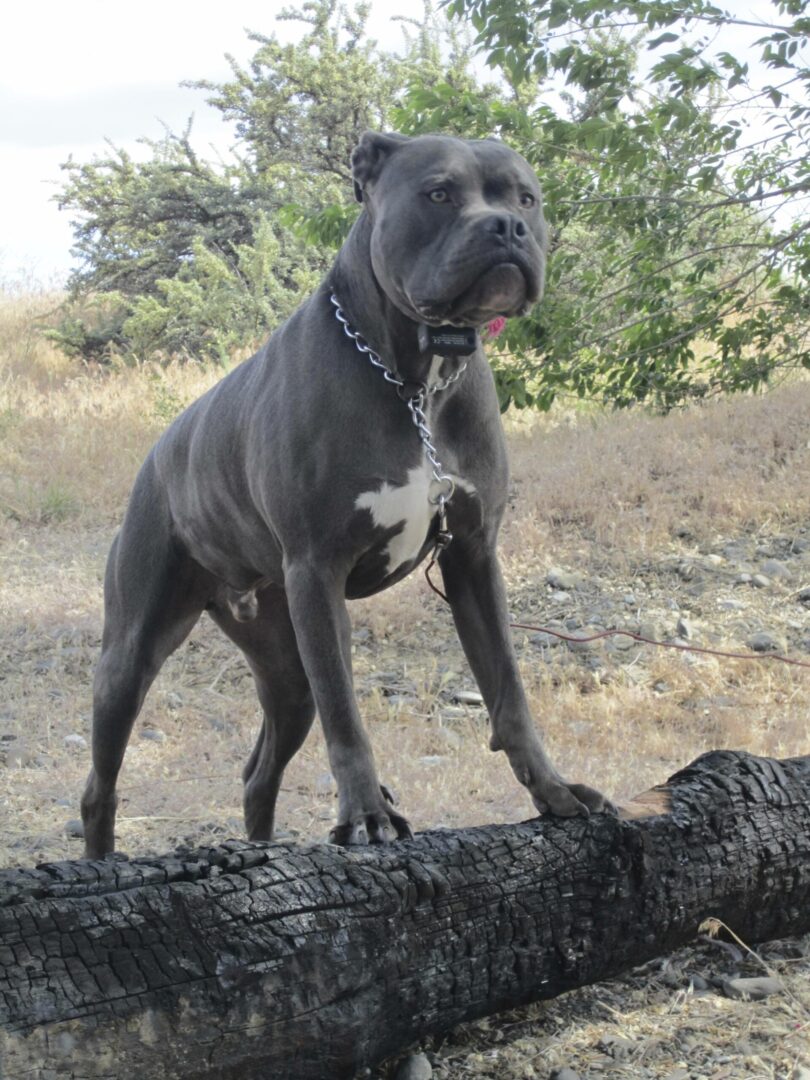
With this breed, too, it’s absolutely vital that you be the alpha in the relationship. Anyone else in the household should also be willing to take on the role of alpha in your absence. It’s not unheard of for American Bandogges to be perfectly compliant when the alpha is present, and then turn into holy terrors when left alone with other members of the household.
Simply stated, this is not a breed for just anyone. Tread carefully.
10. Dogo Argentino
The DogoArgentino is a powerful dog, bred to hunt puma and wild boar. This breed looks dangerous, and it can be every bit as dangerous as it looks. In fact, it’s very much like the American Bandogge in that it might be quite cooperative in the presence of the alpha, but when the alpha isn’t present, the Dogo might decide, “Okay, I think I’LL be the alpha now!”
Training – vigorous training – is absolutely vital with this breed. These are very dominant dogs, and you want to make sure that he’ll obey anyone in your household, at any time, even if circumstances occur that cause him to become agitated.
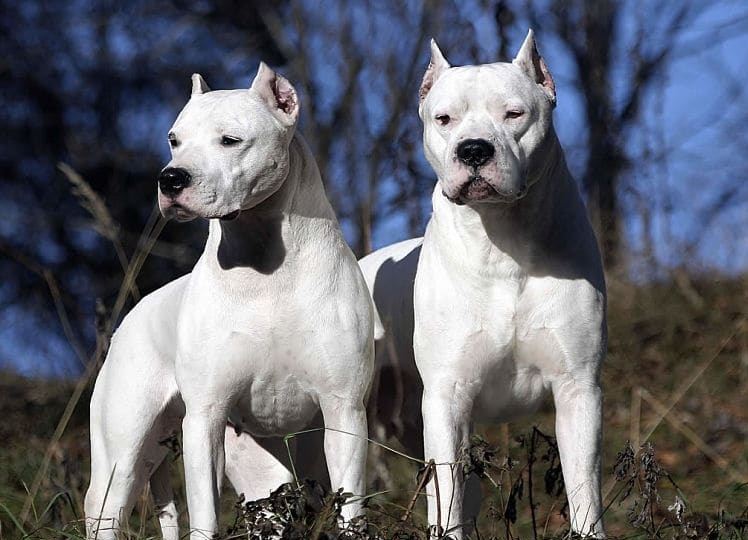
With the DogoArgentino, you might never have a problem if you train him properly. On the other hand, if you don’t, you could end up saying, “I don’t get it – he was just fine until he ate my neighbor’s kid!”
If you’re not fully committed to extensive training, then forget about the DogoArgentino – this is more dog than you can handle.
11. Perro de Presa Canario
This is a very muscular dog that has definitely earned his position on this list of 15 dog breeds with bad reputations. The Presa Canario is massive and strong, and requires strong leadership. If not properly trained, he can be a time bomb waiting to go off.
As is the case with the American Bandogge and the DogoArgentino, if problems are going to occur, they generally will when the alpha is out of the house. The Presa Canario looks to the alpha for leadership, and if that leadership is not present, the dog might be very unruly, and even unstable, around other members of the household.
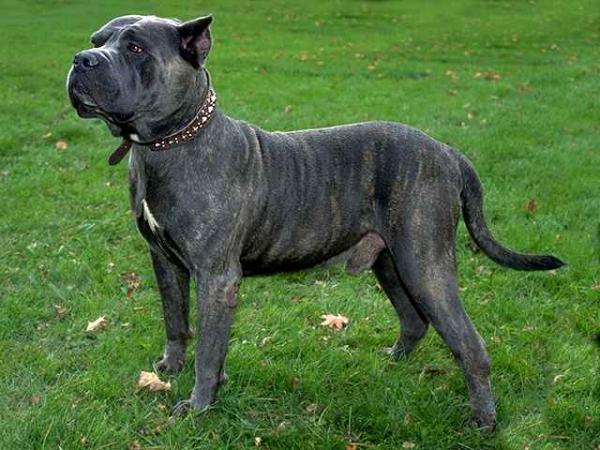
It’s worth mentioning, too, that this is not a breed of dog that’s known to be fond of children. Can’t really fault the breed since I don’t much like kids either, but I would not recommend a Presa Canario for people who have small kids. If you’re considering this breed, wait until your kids are into their teens and able to understand how to be a kind “boss” in their relationship with the dog.
12. Gull Dong
This is another fighting breed that can be hard to control, as is most of the time he case with fighting breeds. The Gull Dong is a Pakistani breed that is often favored by people who want to protect themselves, and their property from criminals. Unfortunately, criminals also want to own Gull Dongs for very bad purposes, including dog fighting and intimidating other humans.

If you’re considering a Gull Dong, I’d advise obtaining a puppy. Older dogs can be pretty risky, because you really have no way of knowing what (if any) training they’ve had. Properly trained, Gull Dongs can be loving and loyal, but if not properly trained, they can be dangerous.
13. Chow Chow
The Chow Chow is a very pretty dog, with his fluffy fur and his lion-like appearance. But when it comes to being asked to name a dog breed that has a bad rap, the Chow Chow is definitely on the list. This dog makes the list of 15 dog breeds with really bad reputations, though, because the Chow Chow can have a really nasty attitude. Despite their cuddly appearance, Chow Chows can react very badly to people who tick them off.
The key with the Chow Chow is, as I’ve pointed out in regard to other breeds, to socialize early and vigorously. You’re dealing with a breed that’s prone to dominant behavior, and one that, if it feels it’s been provoked, might lash out, and might even bite.

Chow Chows are also not typically good with strangers. They might not be outright hostile, but they can be very aloof. This makes them great guard dogs, but not necessarily ideal if you like to do a lot of entertaining. A Chow Chow might meet friends in a good way, or might decide that people coming into your house are not friends.
That’s not to say that these dogs are ill-mannered. It just means that if you’re a passive owner who doesn’t want to be the alpha in the relationship with your dog – and not everyone wants to be the alpha, the Chow Chow might not be the right breed for you.
14. Siberian Husky
These are beautiful dogs, but they can be a bit hard to handle because they’re very strong-willed. They can be great pets, but keep in mind that of all the different breeds of dogs, this is the one that’s closest to the wolf. It’s actually the dog that’s most often chosen by people who want to breed wolf/dog hybrids, which I’ve already pointed out is a pretty bad idea.
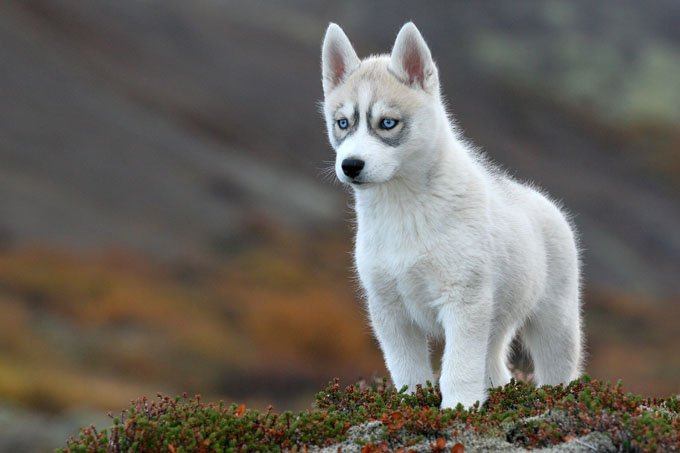
Siberian Huskies are independent, and don’t tolerate “pestering” easily, so they’re not always the best dogs to have around kids. If you are considering a Siberian Husky, you’ll have to be very vigilant about training early if you expect to have a good family dog. Otherwise, you could end up with a very dominant animal that can be snappish at best, and dangerous at worst.
15. Rhodesian Ridgeback
The Rhodesian Ridgeback is a South African Dog that was previously used to keep lions at bay. This should give you an idea of the tenacity of the breed, and also help you to understand why some people are a little timid around them.
This is a big dog, usually weighing in at about 80 pounds. The Rhodesian Ridgeback is aggressive, and not overly fond of strangers, so the breed makes for outstanding guard dogs.

That said, the Rhodesian Ridgeback can make a very good companion if socialized early. Early socialization is absolutely vital, though, with this breed of dog and with any other breed.
10 Things to Think About
I’m not making any representations here as to which dogs really are among the 15 dog breeds that are the most dangerous. As I said in the beginning, I don’t think that any breed is inherently dangerous. Some might be naturally aggressive or dominant, but I think that any breed of dog that’s properly socialized can be a good companion for adult, if not necessarily for children. With that in mind, here are some questions to think about before adopting a breed of dog that crops up on the list when you’re trying to name a dog breed that has a bad rap.
1. If a dog makes the list of dog breeds that have a bad rap, does that mean I shouldn’t buy one?
No, not necessarily. It just means that there might be things you need to know about the breed in order to train your dog of choice effectively in order to make him a good canine citizen.
2. Are all big dogs potentially aggressive?
Yes. For that matter, any dog, regardless of size, has the potential for aggression. Even a small breed of dog can be dangerous if not properly trained. We’ve all heard of Chihuahuas who think that they’re Rottweilers, and are prone to bite. The problem with almost any breed of dog isn’t the dog; it’s the owner – the person who’s new to dogs and ends up with more dog than he can handle, or the person who can’t be bothered to train and socialize. Or, for that matter, the person who has a Shih Tzu or a Toy Poodle or a Chihuahua and thinks that because he or she has a small dog, they don’t have to worry about aggression.
3. But aren’t big dogs naturally more prone to aggression?
No. I have to admit that most of the time if you’re thinking of a dog breed that has a bad rap, it will be a large dog. The dogs I’ve included on this list will probably challenge you, but if you’re up to it, good on you. If you’re not sure that you’re up to the physical and mental challenges of handling a large breed of dog, though, you might do better to choose a mid-size or small dog. You won’t be doing yourself, or your dog, any favors if you take on more than you can handle.
4. Is it fair to name a big dog as one of the breeds that has a bad rap??
Sure, you can name dogs breeds with really bad reputations, and most of them are big dogs. But it’s not fair.
A dog is only as good or as bad as his owner. A well-trained dog, of any breed, can be a good canine citizen. An untrained Beagle can be a total monster, and a well-trained Rottweiler can be a great dog. So whatever breed of dog you have, train him, and remember that he wants to be a good dog – but he’s looking to you for guidance. He only knows what you show him, so teach him well and help him to be the best dog he can be.
5. Aren’t big dogs more likely to bite than small dogs?
A big dog is no more likely to bite than a small dog – it’s just that the bite is less likely to be reported if the dog is small. A bite from a Toy Poodle or a Yorkie isn’t a big deal – you just slap on a Bandaid, make sure that the dog has had its shots, and move on with your life. A bite from something like a Rottweiler, however, can be traumatic to the point where surgery is needed.
Put in plainer terms, if a Cocker Spaniel bites someone’s hand, that person will probably need stitches. If a Rottweiler bites, the hand may need to be sewn back on. That gets reported, and an entire canine population gets a name for being a breed of dog that has a bad rap.
6. Why would anyone want a big dog if they’re that dangerous?
They’re not dangerous in the right hands. Many things can be used for dangerous purposes. A car that can go 200 miles an hour (and most of them these days can) is only dangerous if driven at that speed. A gun is only dangerous if handled carelessly, or used against humans. Fentanyl is only dangerous if used for recreational purposes as opposed to under medical supervision for a medical issue. You get the idea. Your big dog is only dangerous if he’s badly trained, poorly socialized, and used for the wrong purpose.
7. But what if my big dog bites someone?
If your big dog bites, it’s probably your fault. I know I sound like I’m harping on it, but train vigorously, and socialize your big dog. Then he’s not going to be a menace to anyone, no matter what his breed. Although, as I’ve previously stated, wolf dogs would be the exception here. What if your dog does bite someone? Well, then you can be held legally liable in civil court, and might even face criminal charges.
8. What if I screw up and end up with more dog than I can handle?
We’re human. We make mistakes. If you end up with more dog than you can handle, there’s no shame in consulting a professional trainer or an animal behaviorist.
9. I really want one of the dogs that shows up on a “name a dog breed that has a bad rap” list, but I’m not a big person and not all that assertive. Can I still get one of those dogs?
Obviously, you don’t have to pass any course or prove in any way that you’re equipped to handle one of the breeds on the list. I’m not sure if that’s necessarily a good thing – you need to prove competence to fix a car, practice medicine, and even style hair, but you don’t have to prove that you’re a competent dog owner. Sometimes that’s to the detriment of the dog.
However, if your heart is telling you that you must own a Cane Corso or a DogoArgentino, and you’re a small person, a professional trainer can look after quite a bit. If you’re not equipped mentally to handle one of the breeds with a bad rap, though, I’d strongly suggest that you consider another breed.
10. Is there anything else I should know if I want a dog on one of those lists?
The most important advice I can give you is this – find a good breeder. A really good breeder cares very much about their dogs in particular, and in general loves the breed and wants to see it enjoy a good reputation. A reputable breeder will never mate dogs whose temperament is in any doubt, and will do everything they can to ensure that their dogs end up in acceptable homes.
Sure, breeders want to make money by selling dogs. But for a really good breeder, the money is always secondary. They don’t want bite counts recorded against their breed of choice. Avoid puppy mills like the plague they are. Accept the breeder’s suggestions for care and training.
Take your puppy to obedience classes so that he can be socialized with other dogs, and make sure that he is exposed to all kinds of different people and situations. The more people and experiences he encounters, the more confident he will feel, and the less likely he’ll be to “fear bite.”
Think about these things, and ask yourself if you’re ready to take a dog that has been named on the “bad rap” list.
Related Content:
11 Safest Dog Breeds
15 Most Posh Dog Breeds
Best Dog Breeds to Win Over Your Spouse
The Final Word
Can you name a dog breed that has a bad rap? Sure you can. But if you investigated individual cases, you’d likely find that most of the dogs on the “bad rap” list are there because of inept or unassertive owners, or criminals who use the dogs for bad purposes.
If you want a dog that made the list, go for it. Just be sure that you’re ready to handle what could be a very assertive animal that might think he’d be a better alpha than you. Proceed accordingly. Get help if you need it. But don’t let some arbitrary list deprive you of the canine companion of your choice. If you’re a good owner, you’ll have a good dog, regardless of breed.

